By Louise Irvine
This Mother’s Day on May 12, we are paying tribute to working mothers juggling fulfilling careers and raising loving families. With childcare challenges, many Moms have to find practical ways to include their little ones in their work routines. The streets of London were once busy with street vendors cradling their babes while selling flowers, balloons and other fancies. Charles Vyse and his wife Nell created charming pottery figures of these enterprising women in the early 1900s.
The Vyses were depicted in a painting entitled The Revival of the Potter’s Art, published in the Illustrated London News in 1922. Painted by W.R. S. Stott, it was exhibited at the Royal Academy and shows the talented couple in their Chelsea studio. They were neighbors of Stott in this bohemian district, which was once famous for Chelsea China, the first workshop to make porcelain in England in the 18th century. In Victorian times, Chelsea became the haunt of artists and radicals, including Turner, Whistler and Sargent.
Charles Vyse was born in 1882 and raised in the Staffordshire Potteries. He was apprenticed as a modeler at Royal Doulton and won a scholarship to study sculpture at the Royal College of Art in London. He became a regular exhibitor at the Royal Academy and a member of the Royal Society of British Sculptors. He worked in bronze and other materials but struggled to earn a living and returned to his clay roots.
In 1912, Vyse was commissioned to model some of the first figures for Royal Doulton’s famous HN collection, notably Darling HN1, based on his model of a little child in a nightgown called Goodnight. In the same year, he married Sarah Edwards, known as Nell by her family. She was a well-educated young woman who spent two years in France as a student teacher. Nell was a stylish dresser with a penchant for colorful flowing cloaks, cloche hats and shoes with red heels. She was an early Suffragette and embraced Labour Party politics. When she became a mother of two children, John in 1915 and Elizabeth in 1918, she combined family life with political activism and their growing pottery business.
In 1919, Charles and Nell rented a studio in Cheyne Walk, Chelsea, to make ceramic art. Nell studied German pottery-making textbooks and devised exciting new ash glazes for their Chinese-style stoneware vases and bowls. She also assisted with painting the earthenware figures of gypsy peddlers, street vendors and entertainers, which the couple produced during the 1920s and 30s.
Typically, Vyse submitted a matte white glazed sculpture of his new subjects to the Royal Academy for exhibition before slip-casting production figures at his studio. At least ten plaster mold parts were required to make each figure, and the individual pieces were smoothed and stuck together with clay slip before the first firing and underglaze decoration. The costumes of the street vendors were vividly patterned with free-hand stripes and floral sprays. Bunches of flowers were painstakingly created petal by petal in moist clay.
Vyse was inspired by the women he encountered on Old Chelsea's streets. He elevated many of his subjects with titles such as Madonna of World’s End Passage, which was a slum in Victorian times. One day, he noticed an itinerant woman sitting on the side of the road with a bundle of rags on her lap. On closer inspection, he realized that she held a sleeping child having a midday rest which prompted a figure of that name.
One of Vyse’s favorite family excursions was the Epsom horse races, and he would wander around with his sketchbook portraying the Gypsies, such as Madonna of the Racecourse. Romany women often carried their babies to entreat empathy as they entertained visitors by telling fortunes or selling flowers. Charles Vyse was not alone in romanticizing the itinerant lifestyles of these travelers. Famous painters such as Laura Knight and Alfred Munnings regularly visited Epsom Downs. Vyse’s former friend turned rival, Harry Parr, also produced pottery figures of hardy mothers who eked out a living peddling to support their families.
Vyse believed competitors were plagiarizing his ideas and was particularly concerned about Royal Doulton’s series of street vendor figures modeled by Leslie Harradine. According to his children, Vyse constantly ranted about copyright infringement and issued a writ in 1929. Harradine modeled many character figures selling flowers and balloons, which were produced in large numbers for Doulton’s HN collection. In contrast, Charles and Nell limited their production and painted each figure differently. They exhibited their work at prestigious art galleries and exhibitions in the UK and the USA.
Sadly, Charles and Nell’s marriage broke down after she became a fervent member of the Communist Party. Later in life, she became an advocate for the rights of senior citizens and worked tirelessly to help the hungry and the homeless. The vogue for collecting pottery figures continued until World War II, but Charles Vyse continued to work in his Chelsea studio until his 80th year. A photograph from the early 1950s shows him working on a Midday Rest figure. He died in 1971, at the age of 83.
Read more about street vendors and gypsies at WMODA
For more information on Vyse, Parr and Harradine, see 20th Century Figure Makers by T. Cartlidge and D.A. Lawrence. To order, email [email protected]
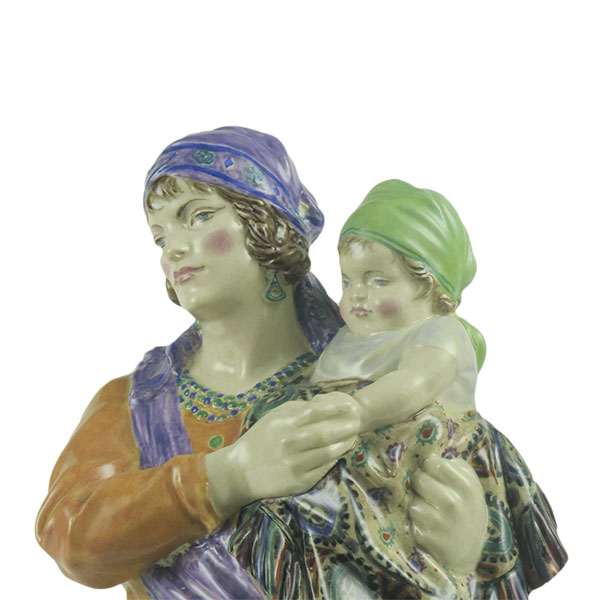
Madonna of the Racecourse Detail C. Vyse
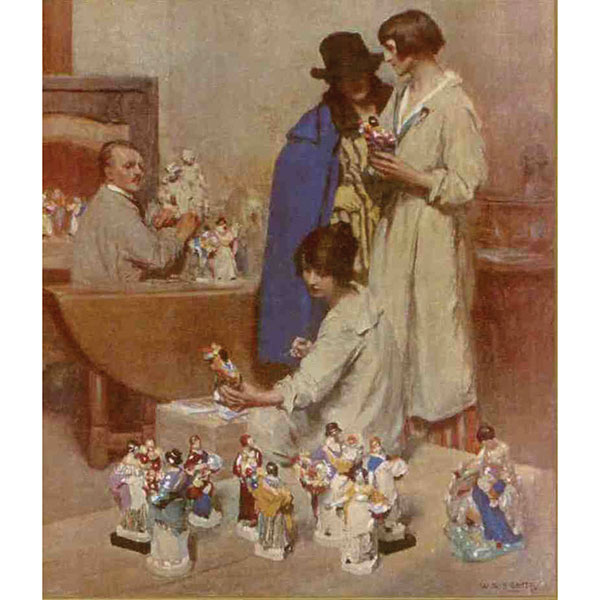
Charles and Nell Vyse W. R. S. Stott
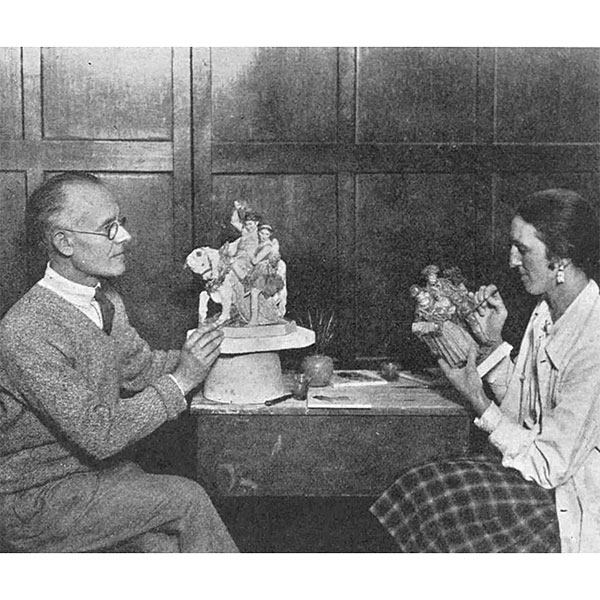
Charles and Nell Vyse working at the Walker Galleries
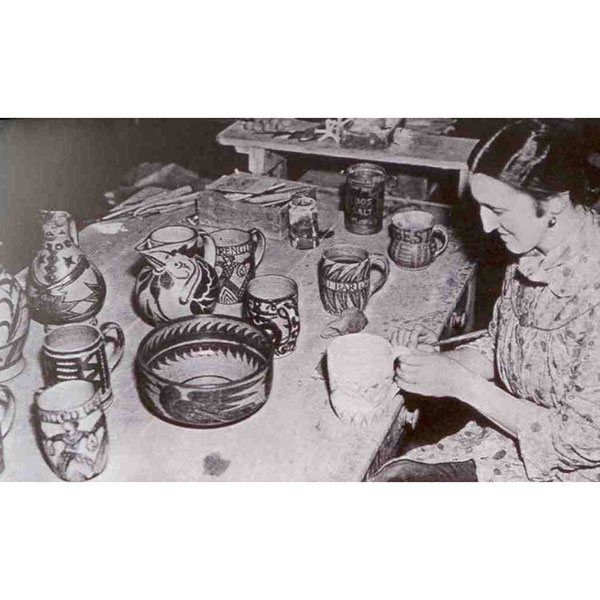
Nell Vyse at work
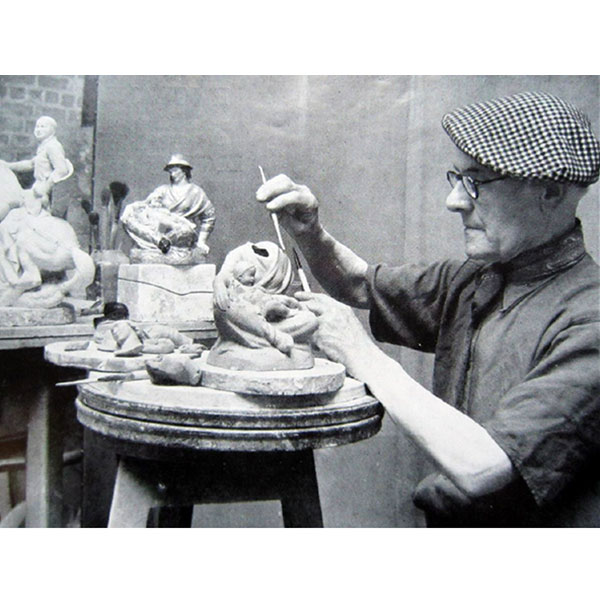
Charles Vyse working on Midday Rest
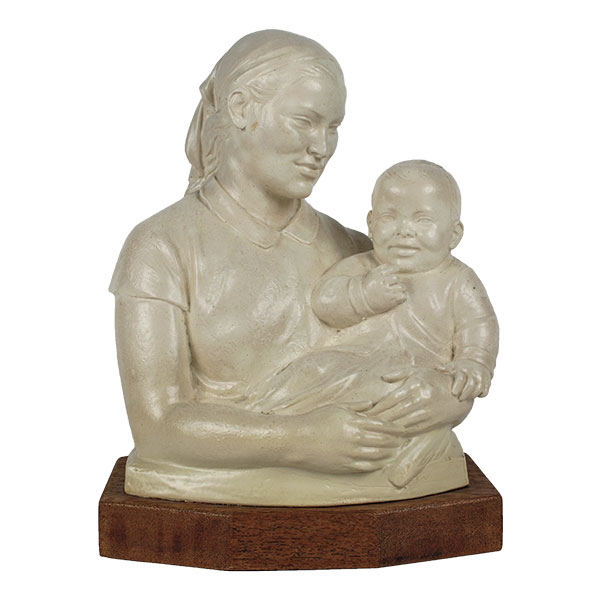
Motherhood with Ash Glaze C. Vyse
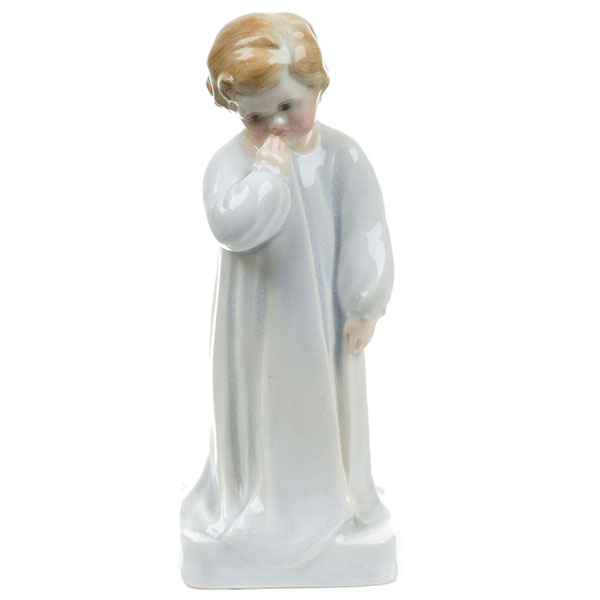
Royal Doulton Darling
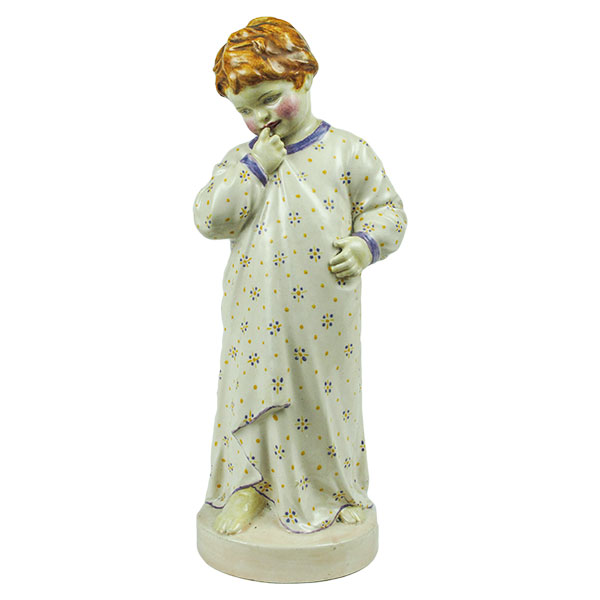
Bedtime C. Vyse
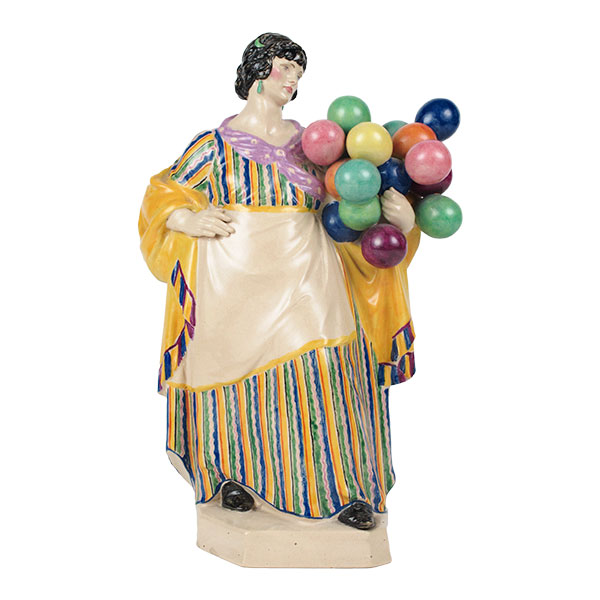
Balloon Woman C. Vyse
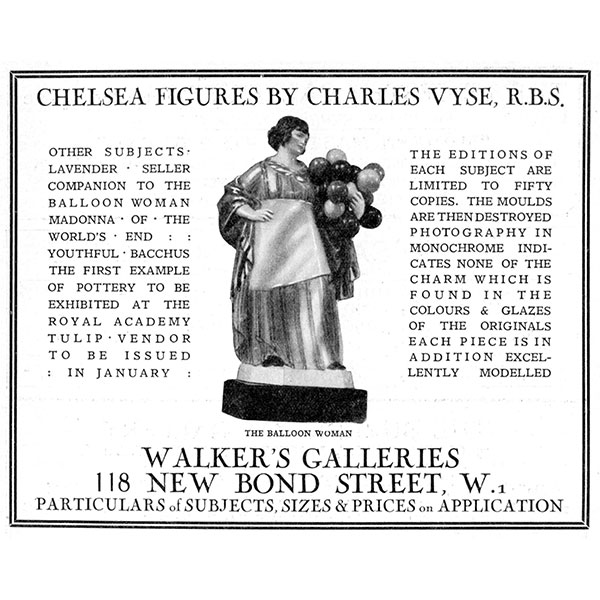
Charles Vyse Advert
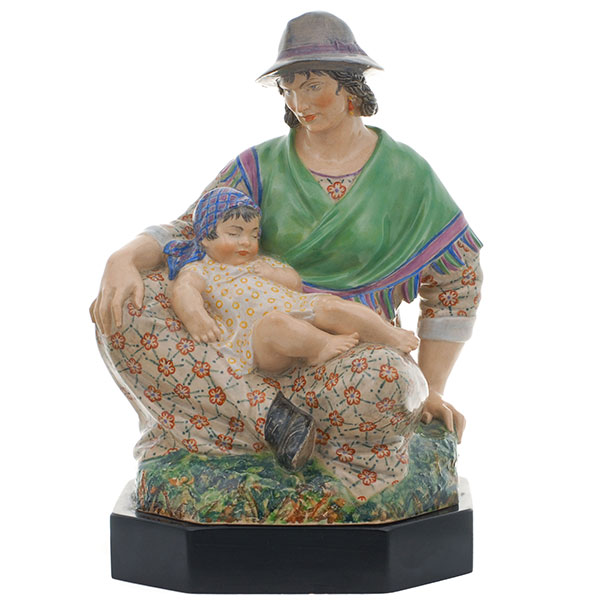
Midday Rest C. Vyse
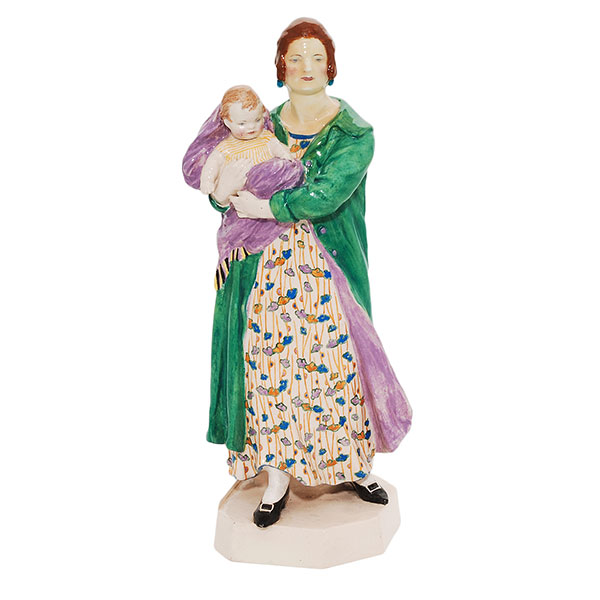
Madonna of World's End Passage C. Vyse
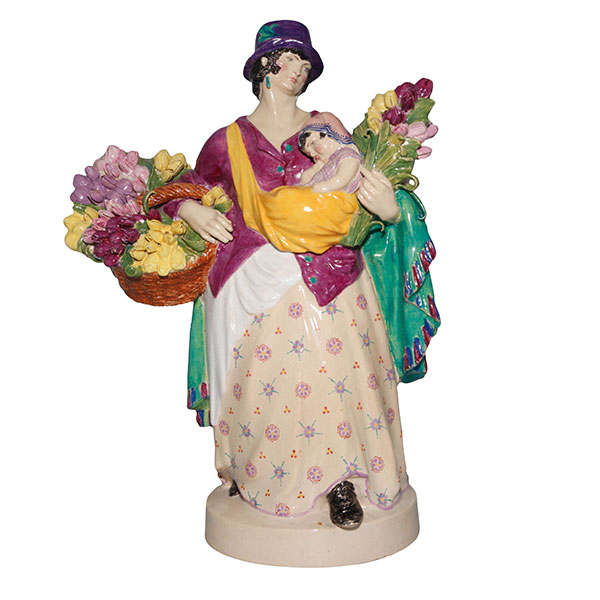
Tulip Woman C. Vyse
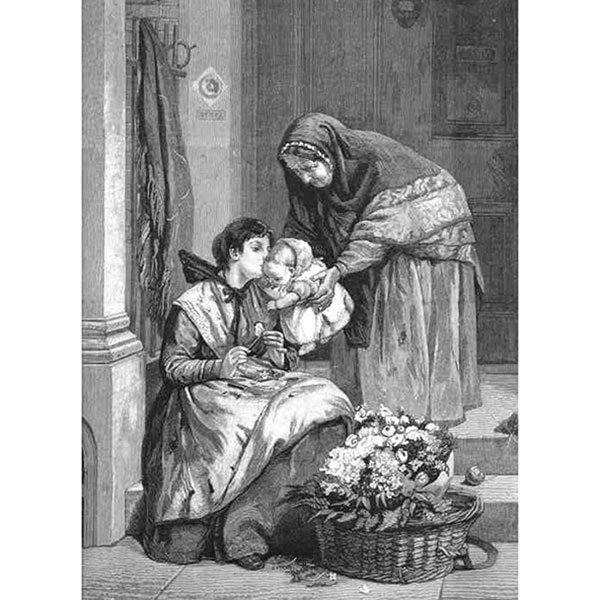
Flower Seller with Baby
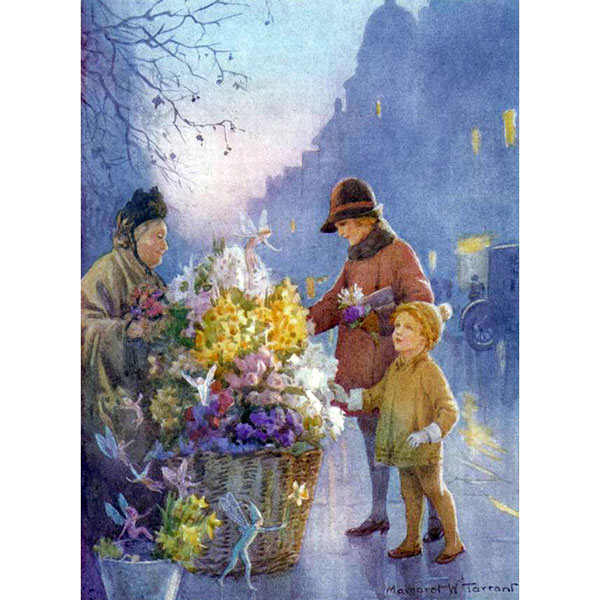
Primroses M. Tarrant
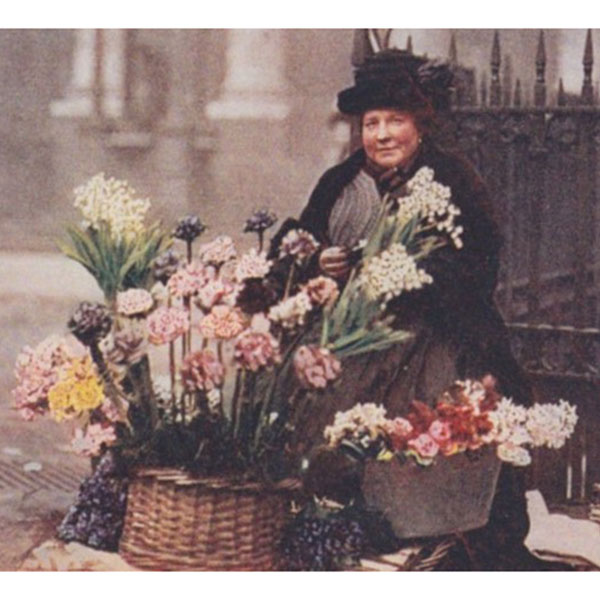
Vintage Flower Seller Postcard
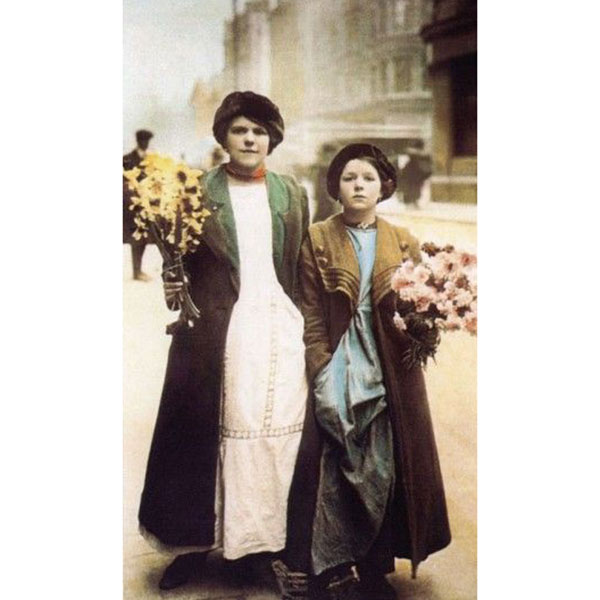
Vintage Flower Seller Postcard
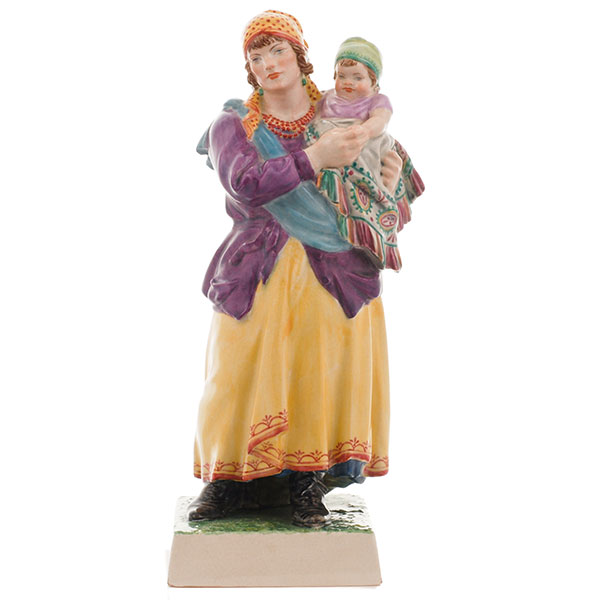
Madonna of the Racecourse C. Vyse
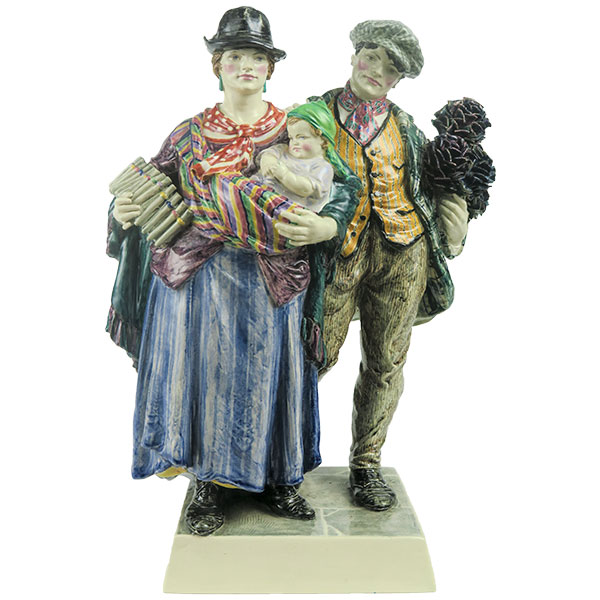
Gypsies C. Vyse
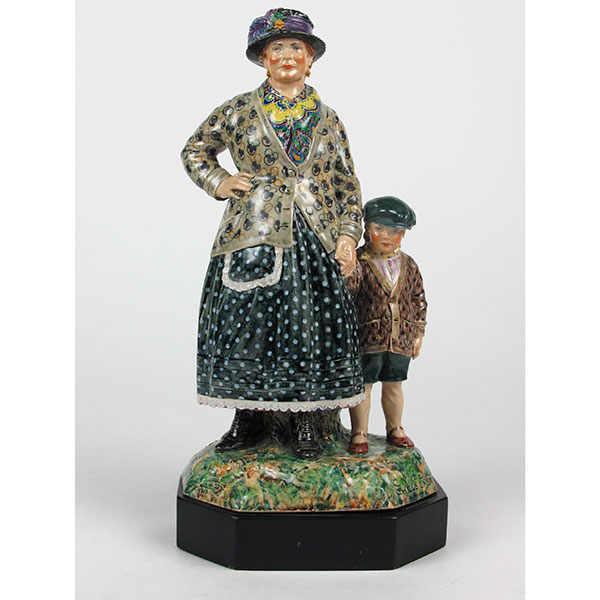
Barnet Fair C. Vyse
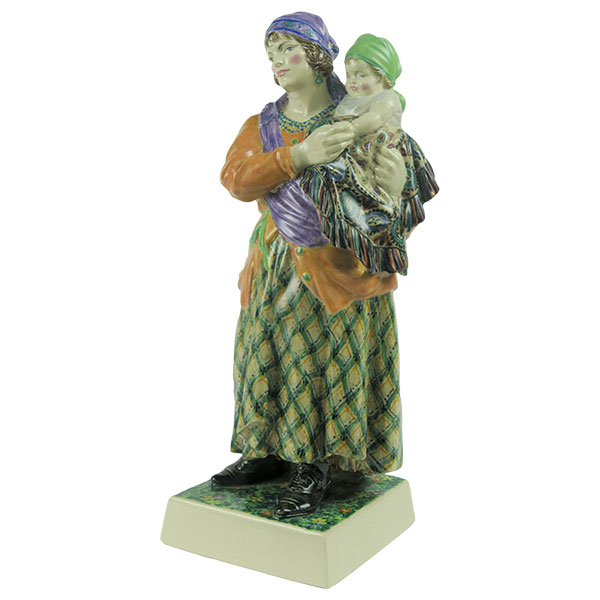
Madonna of Racecourse C. Vyse
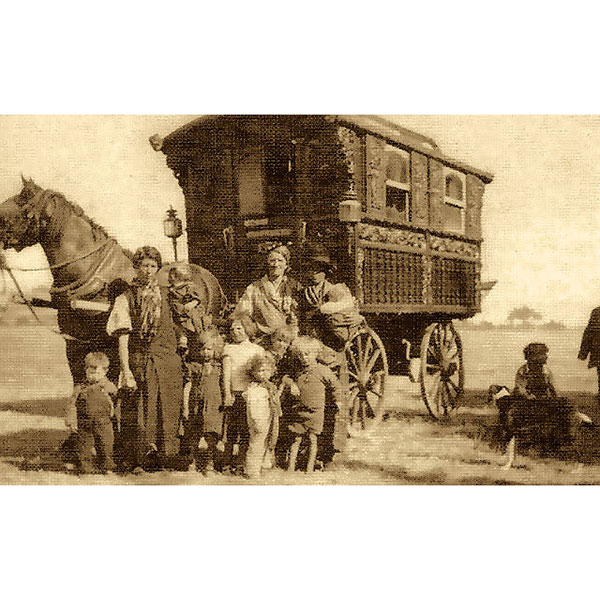
Gypsy family with varda wagon on Epsom Downs
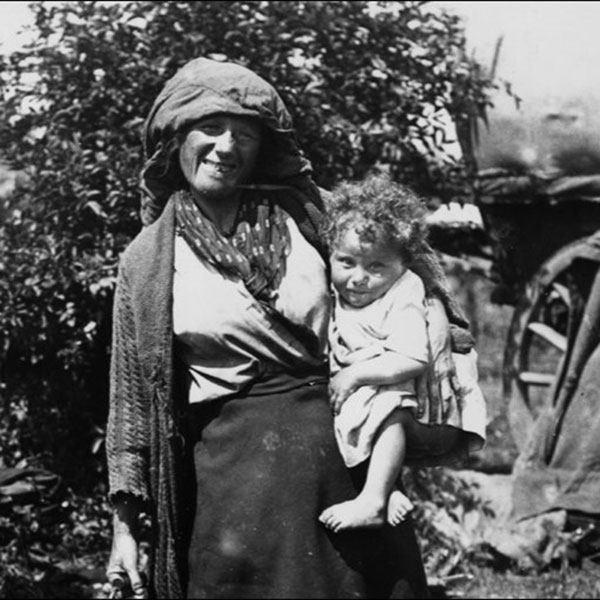
Gypsy Mother
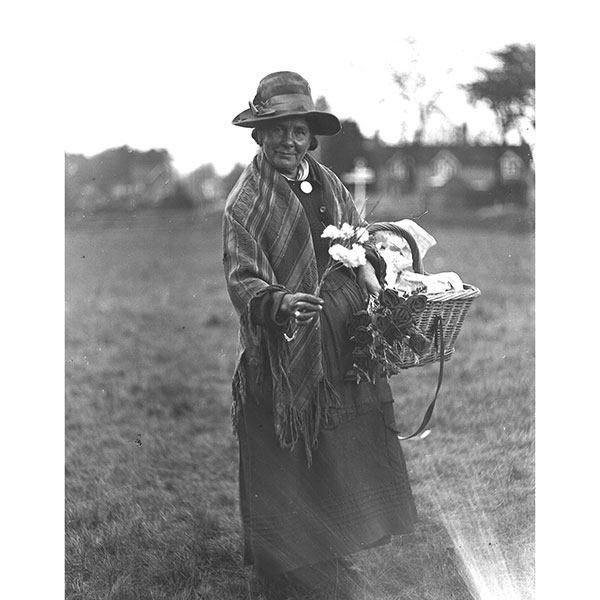
Romany Flower Seller
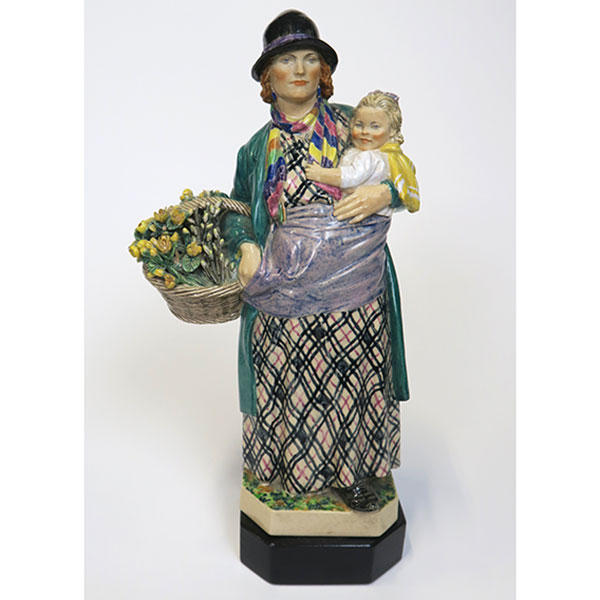
Wildflowers C. Vyse
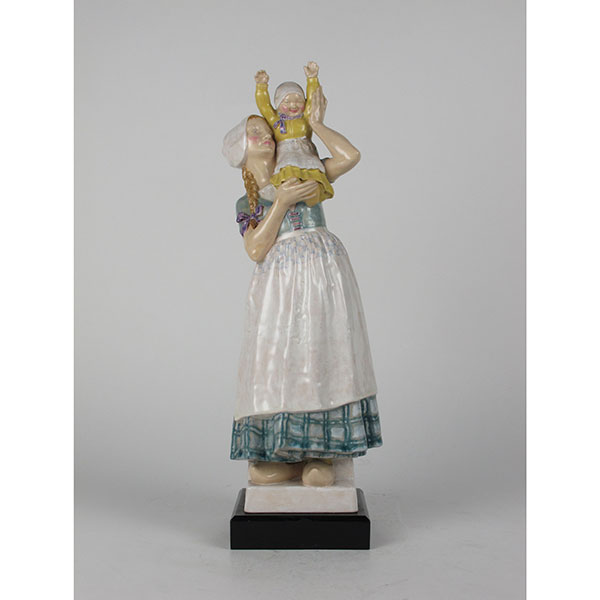
Motherhood H. Parr
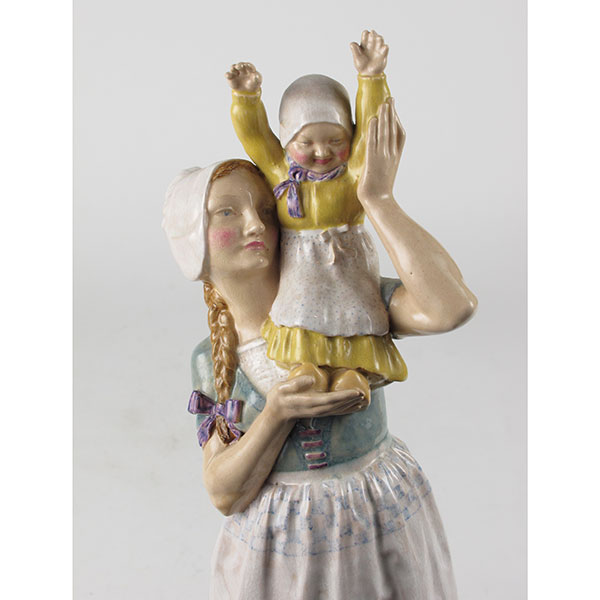
Motherhood H. Parr
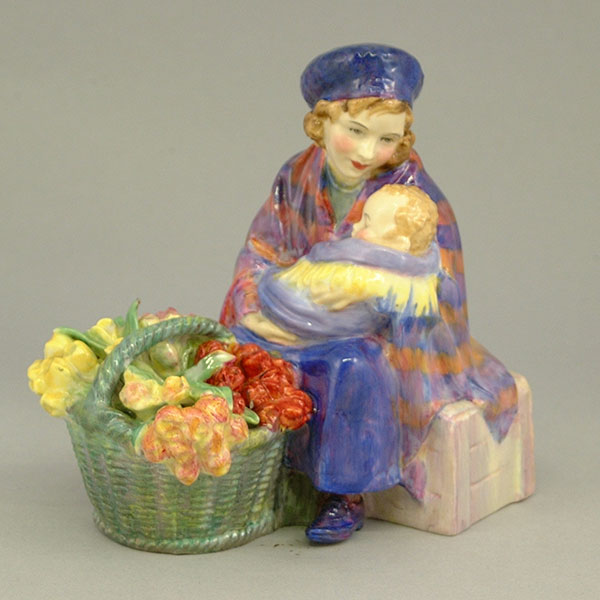
Royal Doulton Curly Knob L. Harradine
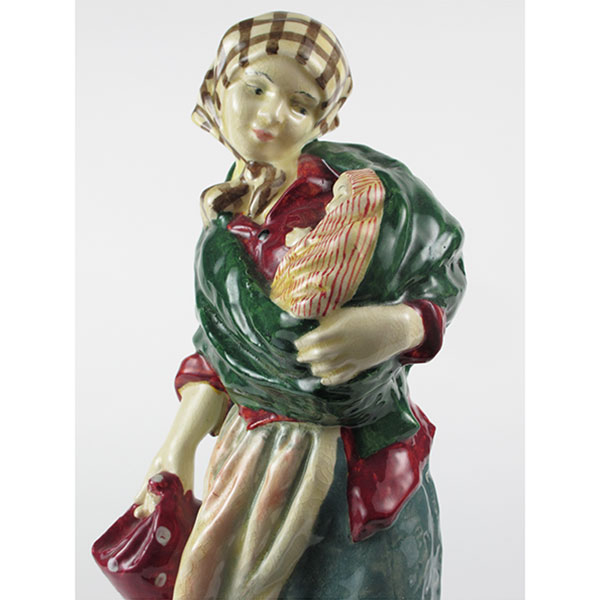
Royal Doulton Young Mother Detail L. Harradine
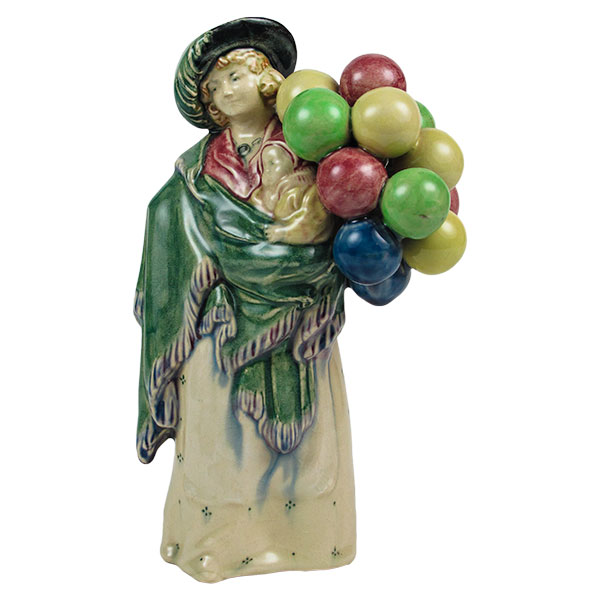
Royal Doulton Balloon Seller L. Harradine
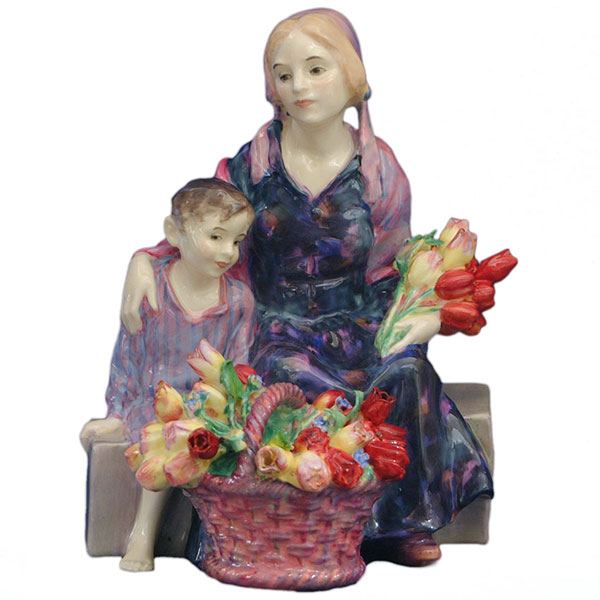
Royal Doulton Little Mother L. Harradine
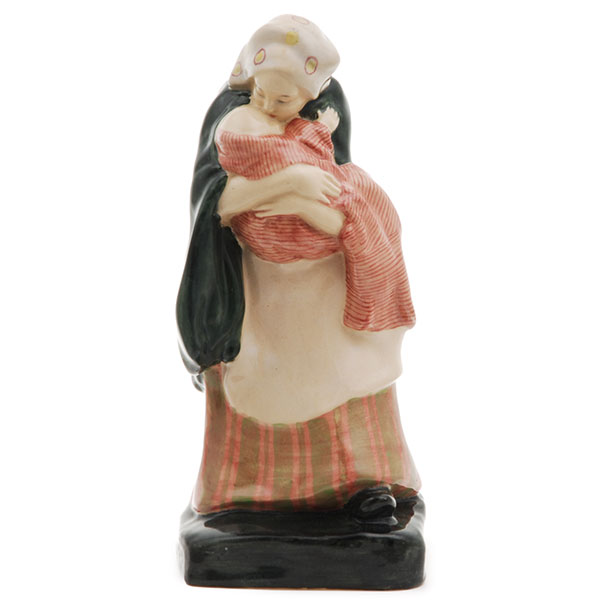
Royal Doulton Motherhood C.J. Noke
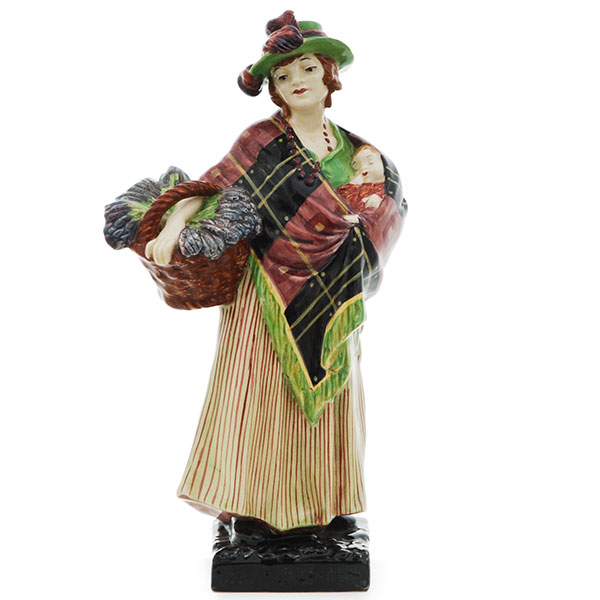
Royal Doulton Sweet Lavender L. Harradine
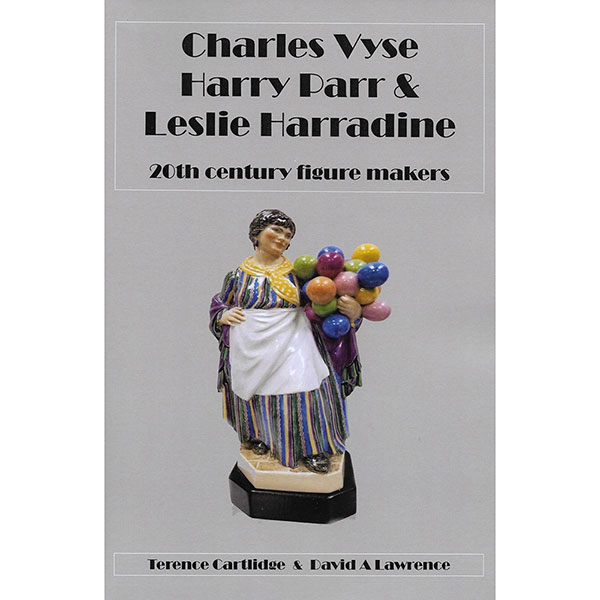
Book Cover
